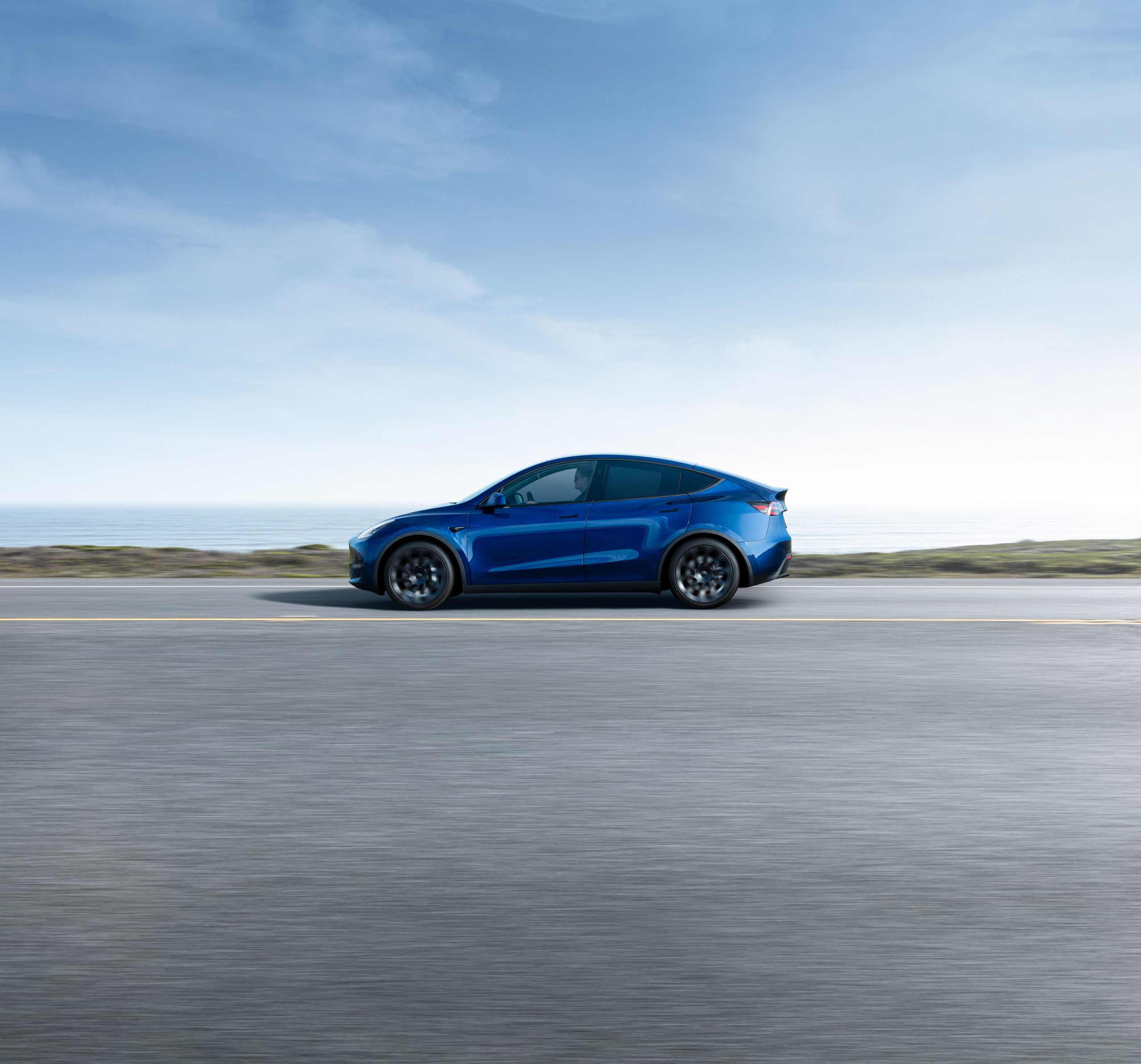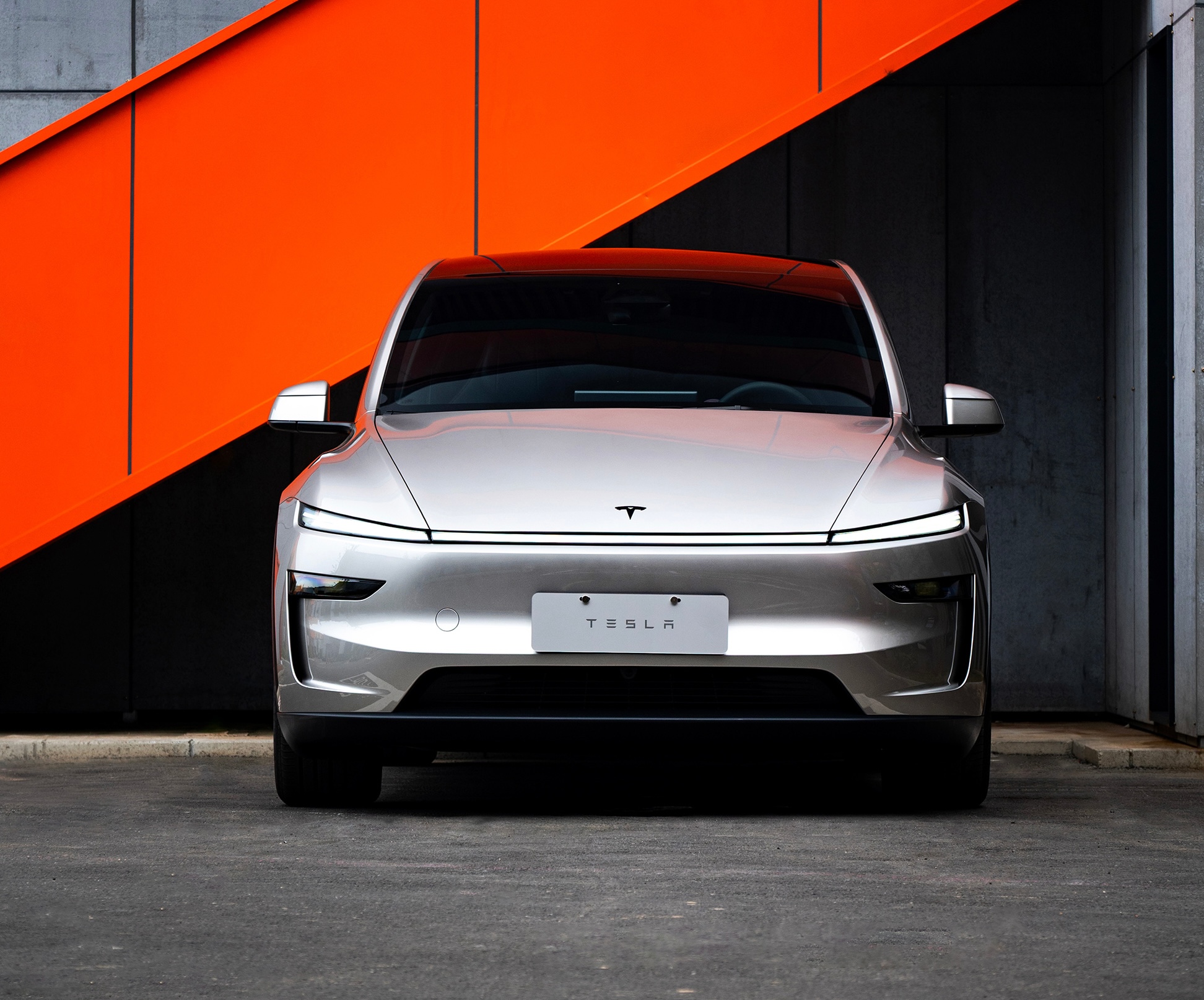

News
Tesla Model Y body castings begin to stack up at Giga Texas
Tesla Model Y castings are beginning to stack up in impressive numbers at the automaker’s Giga Texas plant just outside of Austin. A Snapchat video put up by someone on-site shows perhaps thousands of Model Y castings on the property as Tesla begins to work toward the initial production of the all-electric crossover.
Tesla Giga Texas is slated to begin production later this year, but that is not halting the automaker from starting the pre-production processes of vehicle manufacturing. A focus of Tesla since day 1, the company has always tried to make the manufacturing processes more streamlined through various production efficiencies. The most notable was the introduction of the Giga Press, a massive machine from Italian company IDRA that can cast the body of any of Tesla’s vehicles in a matter of a few seconds. The IDRA presses have been spotted on Giga Texas property in the past, and now it seems Tesla is putting them to work ahead of initial production.
The video was obtained by Teslarati through the Snapchat application, which allows users to scan a map and view Snaps from anywhere on Earth. After finding Giga Texas on the map and accessing the available public Snapchats, it was clear that Model Y castings are beginning to stack up in significant numbers as Tesla prepares to build hundreds of thousands of vehicles at the plant next year.

Tesla has been testing the manufacturing equipment at Giga Texas for several months. In late July, photographs of a Model Y chassis were posted to Reddit, showing a close-to-fully-fabricated body of the all-electric crossover. Some members of the community indicated that it was likely a test frame that was manufactured at the Fremont factory, which was then shipped to Giga Texas to use for calibrating the automated manufacturing machines at the plant. However, Tesla has also built fully-equipped pre-production units since late last month.
Tesla Giga Texas’ Model Y front megacast is as intimidating as it is revolutionary
Additional Model Y castings were seen in the back of a hauler on site, likely being transported to another portion of the Giga Texas property by Joe Tegtmeyer.

Credit: @JoeTegtmeyer
In late August, Tesla was already building Model Y pre-production units at the factory. The pre-production phases are usually utilized by automakers to test the accuracy and efficiency of the machinery at the site, ensuring that it is ready for wide-scale operation.
Additionally, there were rumors of Cybertruck chassis also being present at the plant. While unconfirmed, an image of Cybertruck-shaped objects wrapped and concealed by covers gained a lot of traction, but it was never confirmed whether Tesla was building the vehicle ahead of its initial production phases, which have been pushed back to late 2022, according to Tesla’s online Design Studio.
Tesla plans to kick off production of Texas-built Model Ys later this year as the plant’s initial construction phases finally conclude.
Check out the video of Model Y casts below.

Elon Musk
Tesla needs to come through on this one Robotaxi metric, analyst says
“We think the key focus from here will be how fast Tesla can scale driverless operations (including if Tesla’s approach to software/hardware allows it to scale significantly faster than competitors, as the company has argued), and on profitability.”

Tesla needs to come through on this one Robotaxi metric, Mark Delaney of Goldman Sachs says.
Tesla is in the process of rolling out its Robotaxi platform to areas outside of Austin and the California Bay Area. It has plans to launch in five additional cities, including Houston, Dallas, Miami, Las Vegas, and Phoenix.
However, the company’s expansion is not what the focus needs to be, according to Delaney. It’s the speed of deployment.
The analyst said:
“We think the key focus from here will be how fast Tesla can scale driverless operations (including if Tesla’s approach to software/hardware allows it to scale significantly faster than competitors, as the company has argued), and on profitability.”
Profitability will come as the Robotaxi fleet expands. Making that money will be dependent on when Tesla can initiate rides in more areas, giving more customers access to the program.
There are some additional things that the company needs to make happen ahead of the major Robotaxi expansion, one of those things is launching driverless rides in Austin, the first city in which it launched the program.
This week, Tesla started testing driverless Robotaxi rides in Austin, as two different Model Y units were spotted with no occupants, a huge step in the company’s plans for the ride-sharing platform.
Tesla Robotaxi goes driverless as Musk confirms Safety Monitor removal testing
CEO Elon Musk has been hoping to remove Safety Monitors from Robotaxis in Austin for several months, first mentioning the plan to have them out by the end of 2025 in September. He confirmed on Sunday that Tesla had officially removed vehicle occupants and started testing truly unsupervised rides.
Although Safety Monitors in Austin have been sitting in the passenger’s seat, they have still had the ability to override things in case of an emergency. After all, the ultimate goal was safety and avoiding any accidents or injuries.
Goldman Sachs reiterated its ‘Neutral’ rating and its $400 price target. Delaney said, “Tesla is making progress with its autonomous technology,” and recent developments make it evident that this is true.
Investor's Corner
Tesla gets bold Robotaxi prediction from Wall Street firm
Last week, Andrew Percoco took over Tesla analysis for Morgan Stanley from Adam Jonas, who covered the stock for years. Percoco seems to be less optimistic and bullish on Tesla shares, while still being fair and balanced in his analysis.

Tesla (NASDAQ: TSLA) received a bold Robotaxi prediction from Morgan Stanley, which anticipates a dramatic increase in the size of the company’s autonomous ride-hailing suite in the coming years.
Last week, Andrew Percoco took over Tesla analysis for Morgan Stanley from Adam Jonas, who covered the stock for years. Percoco seems to be less optimistic and bullish on Tesla shares, while still being fair and balanced in his analysis.
Percoco dug into the Robotaxi fleet and its expansion in the coming years in his latest note, released on Tuesday. The firm expects Tesla to increase the Robotaxi fleet size to 1,000 vehicles in 2026. However, that’s small-scale compared to what they expect from Tesla in a decade.
Tesla expands Robotaxi app access once again, this time on a global scale
By 2035, Morgan Stanley believes there will be one million Robotaxis on the road across multiple cities, a major jump and a considerable fleet size. We assume this means the fleet of vehicles Tesla will operate internally, and not including passenger-owned vehicles that could be added through software updates.
He also listed three specific catalysts that investors should pay attention to, as these will represent the company being on track to achieve its Robotaxi dreams:
- Opening Robotaxi to the public without a Safety Monitor. Timing is unclear, but it appears that Tesla is getting closer by the day.
- Improvement in safety metrics without the Safety Monitor. Tesla’s ability to improve its safety metrics as it scales miles driven without the Safety Monitor is imperative as it looks to scale in new states and cities in 2026.
- Cybercab start of production, targeted for April 2026. Tesla’s Cybercab is a purpose-built vehicle (no steering wheel or pedals, only two seats) that is expected to be produced through its state-of-the-art unboxed manufacturing process, offering further cost reductions and thus accelerating adoption over time.
Robotaxi stands to be one of Tesla’s most significant revenue contributors, especially as the company plans to continue expanding its ride-hailing service across the world in the coming years.
Its current deployment strategy is controlled and conservative to avoid any drastic and potentially program-ruining incidents.
So far, the program, which is active in Austin and the California Bay Area, has been widely successful.
News
Tesla Model Y L is gaining momentum in China’s premium segment
This suggests that the addition of the Model Y L to Tesla China’s lineup will not result in a case of cannibalization, but a possible case of “premiumization” instead.

Tesla’s domestic sales in China held steady in November with around 73,000 units delivered, but a closer look at the Model Y L’s numbers hints at an emerging shift towards pricier variants that could very well be boosting average selling prices and margins.
This suggests that the addition of the Model Y L to Tesla China’s lineup will not result in a case of cannibalization, but a possible case of “premiumization” instead.
Tesla China’s November domestic numbers
Data from the a Passenger Car Association (CPCA) indicated that Tesla China saw domestic deliveries of about 73,000 vehicles in November 2025. This number included 34,000 standard Model Y units, 26,000 Model 3 units, and 13,000 Model Y L units, as per industry watchers.
This means that the Model Y L accounted for roughly 27% of Tesla China’s total Model Y sales, despite the variant carrying a ~28% premium over the base RWD Model Y that is estimated to have dominated last year’s mix.
As per industry watcher @TSLAFanMtl, this suggests that Tesla China’s sales have moved towards more premium variants this year. Thus, direct year-over-year sales comparisons might miss the bigger picture. This is true even for the regular Model Y, as another premium trim, the Long Range RWD variant, was also added to the lineup this 2025.
November 2025 momentum
While Tesla China’s overall sales this year have seen challenges, the Model Y and Model 3 have remained strong sellers in the country. This is especially impressive as the Model Y and Model 3 are premium-priced vehicles, and they compete in the world’s most competitive electric vehicle market. Tesla China is also yet to roll out the latest capabilities of FSD in China, which means that its vehicles in the country could not tap into their latest capabilities yet.
Aggregated results from November suggest that the Tesla Model Y took the crown as China’s #1 best-selling SUV during the month, with roughly 34,000 deliveries. With the Model Y L, this number is even higher. The Tesla Model 3 also had a stellar month, seeing 25,700 deliveries during November 2025.








